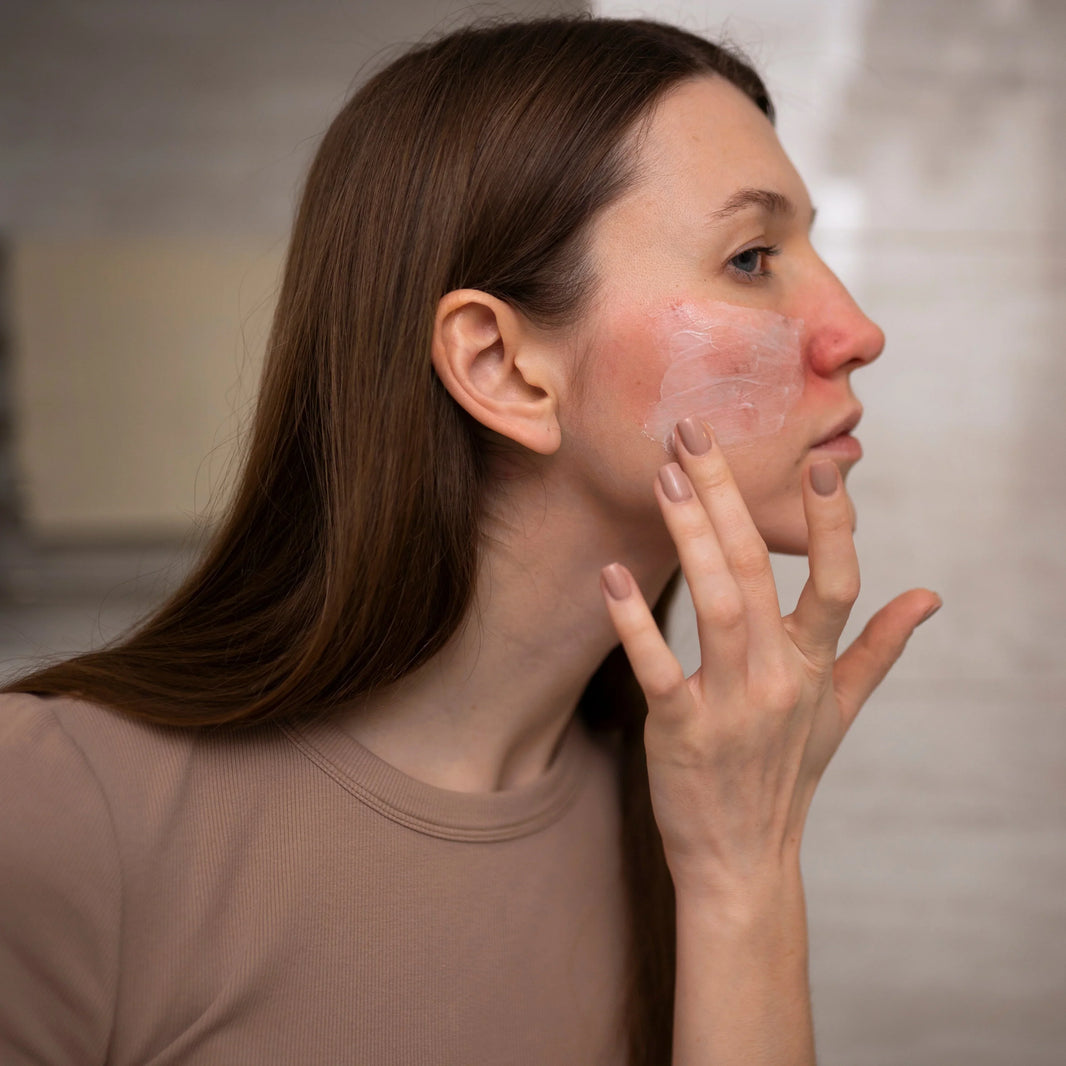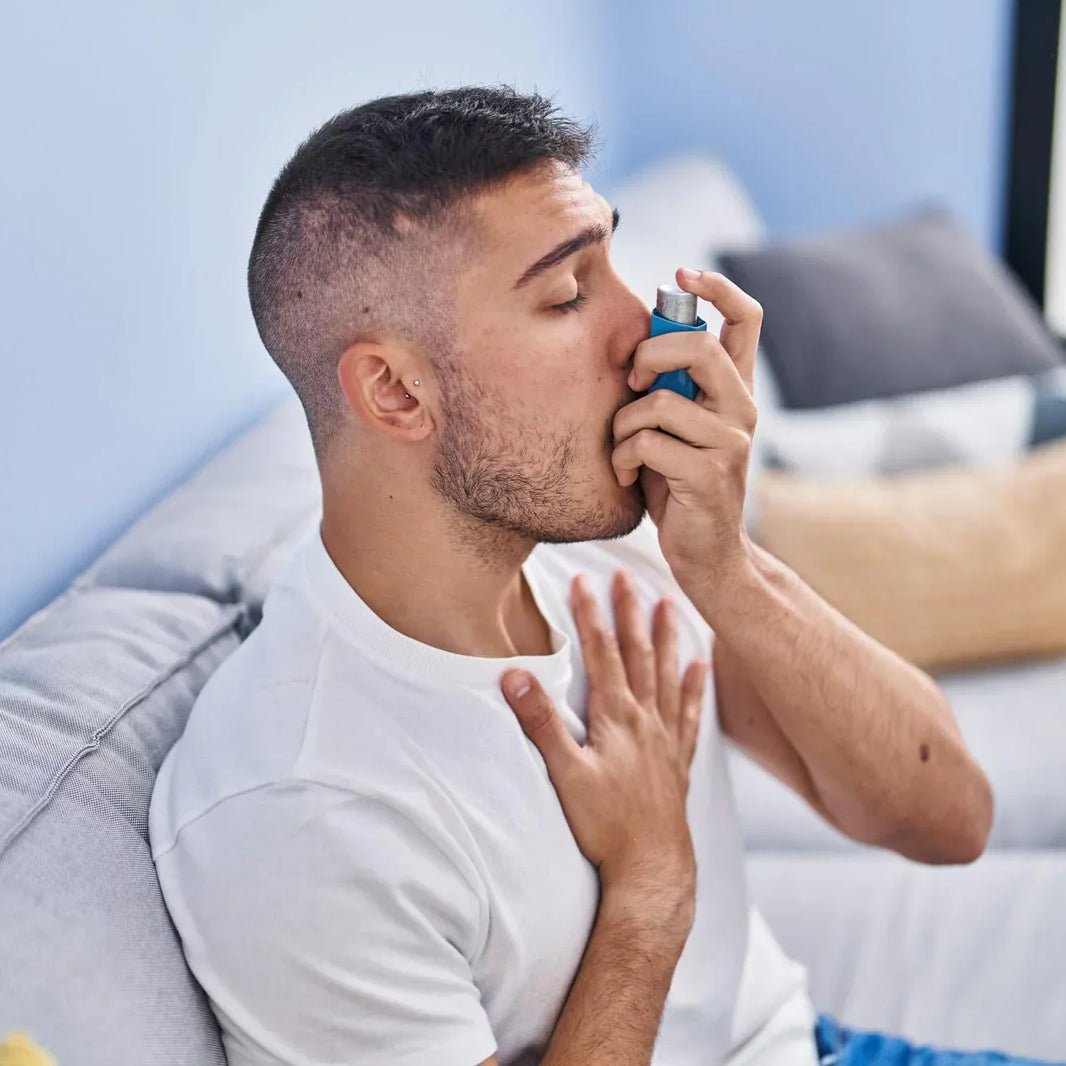Deep slow-wave sleep (SWS) represents a critical stage of sleep characterized by low-frequency, high-amplitude brain oscillations that play vital roles in physical recovery, cognitive function, and overall health. Research indicates that SWS operates through complex cortico-hippocampal interactions and autonomic networks, supporting cardiovascular health, memory consolidation, and metabolic regulation. Among interventions, auditory stimulation shows the strongest evidence for enhancing SWS, with moderate support for pharmacological approaches. Understanding these mechanisms and effective interventions could significantly impact treatment strategies for sleep disorders and related health conditions.
The Nature and Neurophysiology of Slow-Wave Sleep
Slow-wave sleep, also referred to as deep sleep or N3 sleep in current nomenclature, represents a distinct stage of non-rapid eye movement (NREM) sleep characterized by low-frequency high-amplitude oscillations in brain activity37. During this critical sleep phase, the brain exhibits spontaneous alternations between periods of neural activity and silence within corticothalamic networks, creating a unique electrophysiological signature4. These prominent brain oscillations during deep sleep appear to represent an important cardiovascular recovery process for the human body, though the specific mechanisms through which sleep affects cardiovascular function remain incompletely understood1. The distinctive slow waves that characterize this sleep stage are not merely passive phenomena but actively contribute to various restorative processes throughout the body and brain, making SWS an essential component of healthy sleep architecture.
The neurophysiological dynamics of SWS reveal fascinating patterns of neural activity origination and propagation throughout the cortex. Research utilizing simultaneous multisite field potential, multiunit recordings, and intracellular recordings has demonstrated that during SWS, activity typically begins in deep cortical locations, particularly in layer V of the cortex, before spreading to other regions4. The transition from silence to activity is mediated by spontaneous synaptic events, where theoretically any neuron may become active first due to the probabilistic nature of activity onset4. However, the large pyramidal cells located in the deep cortical layers are particularly well-suited for switching the entire network into an active state due to their numerous synaptic inputs and extensive projection fields4. This hierarchical activation pattern creates the characteristic slow oscillations that define deep sleep and contribute to its restorative functions.
Neural Pathways and Mechanisms Underlying Slow-Wave Sleep
The neural mechanisms underlying SWS involve complex interactions between various brain regions, particularly highlighting the importance of cortico-hippocampal communication. During SWS, hippocampal sharp wave-ripple complexes (SWRs) involve the synchronous discharge of thousands of cells throughout the CA3-CA1-subiculum-entorhinal cortex axis5. These strong transient outputs affect cortical targets, potentially serving as a means for memory transfer from the hippocampus to the neocortex for long-term storage5. Neurophysiological observations support the role of SWRs in memory consolidation through a cortico-hippocampal feedback loop, with cortical slow oscillations modulating hippocampal activity and ripples through synaptic interactions5. This bidirectional communication appears crucial for the cognitive benefits associated with deep sleep, particularly for processes related to learning and memory formation.
The autonomic regulation during SWS represents another critical mechanism through which this sleep stage impacts physical health. Research has revealed that SWS is linked to functional connectivity in the central autonomic network, with distinct patterns of heart rate variability during this sleep stage compared to wakefulness or other sleep stages13. This relationship highlights the importance of brain-heart interactions during deep sleep, with higher slow-wave activity potentially indicating better autonomic function. Interestingly, the upper airway muscle activity, particularly in the genioglossus muscle, is elevated during SWS compared to lighter sleep stages8. This increased muscle activity is primarily driven by reflex stimulation of airway mechanoreceptors and central chemoreceptors, suggesting an adaptive mechanism to maintain airway patency during the deepest stages of sleep when muscle relaxation might otherwise compromise breathing8.
The role of specific brain regions in generating and maintaining SWS has been identified through various research approaches. The anterior nucleus of the thalamus has been implicated in slow-wave activity, with deep brain stimulation of this region shown to increase slow-wave activity in sleep9. Additionally, the temporoparietal junction (TPJ) demonstrates higher relative slow-wave activity in relation to prosocial behavior, suggesting that sleep depth in this region might serve as an indicator of social cognitive ability11. Genetic factors also play a role in SWS regulation, as evidenced by research on marine mammals that have evolved unihemispheric slow-wave sleep (USWS)12. In cetaceans, mutations in the circadian regulator BMAL2 enhance the transcriptional activation of PER2, which is closely linked to sleep regulation, allowing these animals to maintain continuous movement and alertness during sleep12. These diverse neural and genetic mechanisms collectively contribute to the complex phenomenon of slow-wave sleep.
Health Implications and Benefits of Slow-Wave Sleep
The importance of SWS for cardiovascular health has been increasingly recognized in recent research. Studies have shown that slow waves during deep sleep support cardiac function and play a role in the prevention of cardiovascular diseases1. Experimental enhancement of slow waves via auditory stimulation has been found to impact cardiovascular dynamics during sleep and next-day cardiac function, suggesting a direct relationship between SWS quality and heart health1. This cardioprotective effect of deep sleep may operate through multiple mechanisms, including blood pressure regulation, autonomic balance, and inflammatory processes. The relationship between SWS and cardiovascular health underscores the importance of addressing sleep quality as part of comprehensive heart disease prevention strategies.
The cognitive benefits of SWS are equally significant, with substantial evidence supporting its role in memory consolidation and overall cognitive function. The slow oscillations during deep sleep facilitate the transfer of memory from the hippocampus to the neocortex for long-term storage, a process critical for learning and retention57. Research examining the effects of auditory stimulation during SWS has found that enhancing slow waves can improve overnight memory consolidation, particularly for episodic memory7. Additionally, recent studies have identified a relationship between prosocial preferences and slow-wave activity in the temporoparietal junction, suggesting that sufficient sleep depth in this region might influence social cognitive abilities11. These findings emphasize the broad impact of SWS on various domains of cognitive and emotional functioning.
Metabolic health also appears to be significantly influenced by SWS, with emerging evidence suggesting a protective relationship against metabolic disorders. Studies examining the association between SWS and type 2 diabetes have found that higher proportion and longer duration of N3 sleep may be associated with reduced diabetes risk14. This relationship may be mediated through SWS's role in hormonal regulation, particularly for hormones involved in glucose metabolism and appetite control10. The relationship between deep sleep and metabolic health adds another dimension to the importance of SWS for overall physical wellbeing and suggests potential therapeutic targets for addressing metabolic disorders through sleep improvement.
Beyond these specific health domains, SWS has been implicated in a wide range of physiological processes essential for optimal functioning. Recent research has highlighted the potential neuroprotective role of SWS through its interaction with the glymphatic system, which is responsible for waste clearance in the brain10. This relationship suggests that deep sleep may be crucial for preventing the accumulation of neurotoxic waste products and potentially reducing the risk of neurodegenerative diseases. Additionally, SWS is associated with optimal physical, psychological, and cognitive functions across the lifespan, though the specific mechanisms and implications may vary with age10. The multifaceted health benefits of SWS underscore the importance of developing effective strategies to optimize this critical sleep stage.
Interventions to Enhance Slow-Wave Sleep: Evidence and Efficacy
Auditory Stimulation Approaches
Auditory stimulation during SWS has emerged as one of the most promising non-pharmacological interventions for enhancing slow-wave activity. This approach typically involves delivering short acoustic stimuli timed to coincide with the up-states of endogenous slow waves, which can entrain and enhance these waves7. A systematic review and meta-analysis of studies investigating acoustic stimulation during SWS found a combined effect size (Hedges' g) of 0.25 (p=0.07) for memory consolidation benefits, with subgroup analyses of phase-locked stimulation approaches showing a more significant effect size of 0.36 (p=0.047)7. These findings suggest that properly timed auditory stimulation can effectively enhance SWS and its associated cognitive benefits, though the overall effect size indicates moderate rather than strong efficacy.
Recent research has further validated the effectiveness of auditory stimulation for enhancing SWS across different age groups. In a feasibility trial involving adolescents aged 13-18 years, closed-loop auditory stimulation significantly increased slow-wave amplitude by 10.7%, total slow-wave activity by 7.38%, and mean slow-wave activity by 7.57% compared to sham stimulation6. Importantly, this enhancement of slow waves did not increase microarousals or power in alpha and beta bands, suggesting that the intervention did not disrupt sleep continuity6. The demonstrated efficacy in both adults and adolescents, along with the non-invasive nature of the intervention, makes auditory stimulation a particularly promising approach for SWS enhancement in diverse populations.
The mechanisms through which auditory stimulation enhances SWS appear to involve the entrainment of neural oscillations, though the exact pathways remain an area of active investigation. When properly timed, acoustic stimuli can synchronize with the brain's natural slow oscillations, potentially amplifying their magnitude and extending their duration7. This enhanced synchronization may then facilitate the various physiological processes associated with SWS, including memory consolidation and cardiovascular recovery17. The relative simplicity and safety of auditory stimulation approaches, combined with their demonstrated efficacy, positions them as a leading intervention for SWS enhancement, with potential applications in both clinical and wellness contexts.
Pharmacological Interventions
Several pharmacological agents have demonstrated the ability to enhance SWS, though with varying levels of evidence regarding their efficacy and safety. Ritanserin, a potent long-acting 5-HT2 antagonist, has been shown to increase deep slow-wave sleep in humans2. This compound acts centrally and has been observed to improve liveliness in various psychiatric disorders, suggesting multiple potential therapeutic applications2. In the context of alcohol abuse and dependence, ritanserin has shown promise for reducing alcohol intake and preference in various models, potentially through its effects on sleep architecture2. However, the evidence base for ritanserin specifically as an SWS enhancer remains limited, with more research needed to fully establish its efficacy and safety profile for this purpose.
L-DOPA, a precursor to dopamine commonly used to treat Parkinson's disease, represents another pharmacological approach to enhancing SWS. A double-blind, randomized, placebo-controlled crossover trial in healthy older adults found that a single dose of L-DOPA increased total slow-wave sleep duration by approximately 11% compared to placebo15. Additionally, L-DOPA increased spindle amplitudes around slow oscillation peaks and around 1-4 Hz NREM spectral power, indicating a significant impact on sleep architecture15. Interestingly, the study also found that L-DOPA differentially affected memory depending on prior exposure, worsening memory of words presented only once compared to re-exposed words15. These findings highlight the complex interactions between dopaminergic signaling, sleep architecture, and cognitive function.
The mechanisms through which pharmacological agents enhance SWS likely involve modulation of specific neurotransmitter systems that regulate sleep-wake cycles. Ritanserin's effects on SWS may be mediated through its antagonism of serotonin 5-HT2 receptors, which have been implicated in sleep regulation2. For L-DOPA, the enhancement of SWS may involve dopaminergic projections between the midbrain and hippocampus, which potentially support memory processes during slow wave sleep15. While these pharmacological approaches show promise, they also carry the potential for side effects and may not be suitable for all individuals. The risk-benefit profile of pharmacological SWS enhancers needs careful consideration, particularly for long-term use or in populations with existing health conditions.
Neuromodulation and Emerging Approaches
Neuromodulation techniques represent an emerging area of intervention for enhancing SWS, though evidence is still preliminary compared to other approaches. Deep brain stimulation (DBS) of the anterior nucleus of the thalamus (ANT) has been shown to increase slow-wave activity in non-rapid eye movement sleep, as demonstrated in a multicenter crossover study in epilepsy patients9. While DBS is primarily used for treatment-resistant epilepsy and certain movement disorders, these findings suggest potential additional benefits for sleep architecture. However, the invasive nature of DBS limits its application specifically for sleep enhancement, making it more relevant as a potential added benefit for patients already receiving this treatment for other indications.
Other emerging approaches to SWS enhancement include transcranial electrical stimulation and various lifestyle interventions, though these were not extensively covered in the search results. Physical exercise, dietary modifications, and stress reduction techniques have all been studied for their effects on sleep quality, including SWS, but the evidence base varies considerably across these approaches. The development of new technologies and interventions for sleep enhancement continues to be an active area of research, with the potential to expand the available options for addressing insufficient SWS and its associated health consequences.
The comparative efficacy of different SWS enhancement approaches remains an important consideration for both research and clinical applications. Currently, auditory stimulation has the most robust evidence base among non-pharmacological interventions, while certain pharmacological agents like L-DOPA show promise but require further investigation regarding long-term efficacy and safety. The ideal approach may vary depending on individual factors, including age, existing health conditions, and the specific aspects of SWS that require enhancement. A personalized approach to SWS enhancement, considering these individual factors and the relative strengths of different interventions, may ultimately prove most effective for optimizing this critical sleep stage.
Conclusion
Deep slow-wave sleep represents a critical component of healthy sleep architecture with far-reaching implications for physical health, cognitive function, and overall wellbeing. The neural mechanisms underlying SWS involve complex interactions between cortical regions, hippocampal structures, and autonomic systems, collectively contributing to the restorative functions of this sleep stage. The health benefits of SWS span multiple domains, including cardiovascular health, cognitive function, metabolic regulation, and potentially neuroprotection against age-related decline. Given these significant health implications, interventions to enhance SWS have become an important focus of sleep research and clinical practice.
Among the various approaches to enhancing SWS, auditory stimulation currently has the strongest evidence base, with multiple controlled studies demonstrating its efficacy for increasing slow-wave activity and associated cognitive benefits. Pharmacological interventions such as ritanserin and L-DOPA show promise but require further investigation regarding their long-term efficacy and safety profiles. Neuromodulation techniques like deep brain stimulation represent an emerging area with potential applications for specific populations. The continued development and refinement of these interventions will be essential for addressing insufficient SWS and its associated health consequences in diverse populations.
Future research in this field should focus on several key areas, including the long-term effects of SWS enhancement on health outcomes, the optimal parameters for different interventions, and the potential for combining multiple approaches for synergistic effects. Additionally, better understanding the individual factors that influence SWS and response to enhancement interventions will be crucial for developing personalized approaches to sleep improvement. As our understanding of SWS mechanisms and interventions continues to evolve, the potential for significantly improving health outcomes through targeted enhancement of this critical sleep stage remains a promising frontier in sleep medicine and neuroscience.
Citations:
- https://www.semanticscholar.org/paper/90e1bcababf41574134d94a52988c403c255347a
- https://pubmed.ncbi.nlm.nih.gov/8974378/
- https://pubmed.ncbi.nlm.nih.gov/25871341/
- https://www.ncbi.nlm.nih.gov/pmc/articles/PMC2951844/
- https://www.ncbi.nlm.nih.gov/pmc/articles/PMC3564232/
- https://pubmed.ncbi.nlm.nih.gov/39653656/
- https://pubmed.ncbi.nlm.nih.gov/33406249/
- https://pubmed.ncbi.nlm.nih.gov/28255086/
- https://pubmed.ncbi.nlm.nih.gov/37209093/
- https://www.semanticscholar.org/paper/237882298d90a43c6387ea1638f0871c60edc2f3
- https://www.ncbi.nlm.nih.gov/pmc/articles/PMC11007317/
- https://www.ncbi.nlm.nih.gov/pmc/articles/PMC11009019/
- https://www.ncbi.nlm.nih.gov/pmc/articles/PMC10208252/
- https://pubmed.ncbi.nlm.nih.gov/37084404/
- https://www.ncbi.nlm.nih.gov/pmc/articles/PMC10113484/
- https://pubmed.ncbi.nlm.nih.gov/38069589/
- https://www.ncbi.nlm.nih.gov/pmc/articles/PMC6663996/
- https://www.ncbi.nlm.nih.gov/pmc/articles/PMC10899224/
- https://pubmed.ncbi.nlm.nih.gov/30317806/
- https://www.ncbi.nlm.nih.gov/pmc/articles/PMC6430170/
- https://www.semanticscholar.org/paper/89d169253bffe2e2177c617ff3421151bcce67bc
- https://pubmed.ncbi.nlm.nih.gov/35334450/








